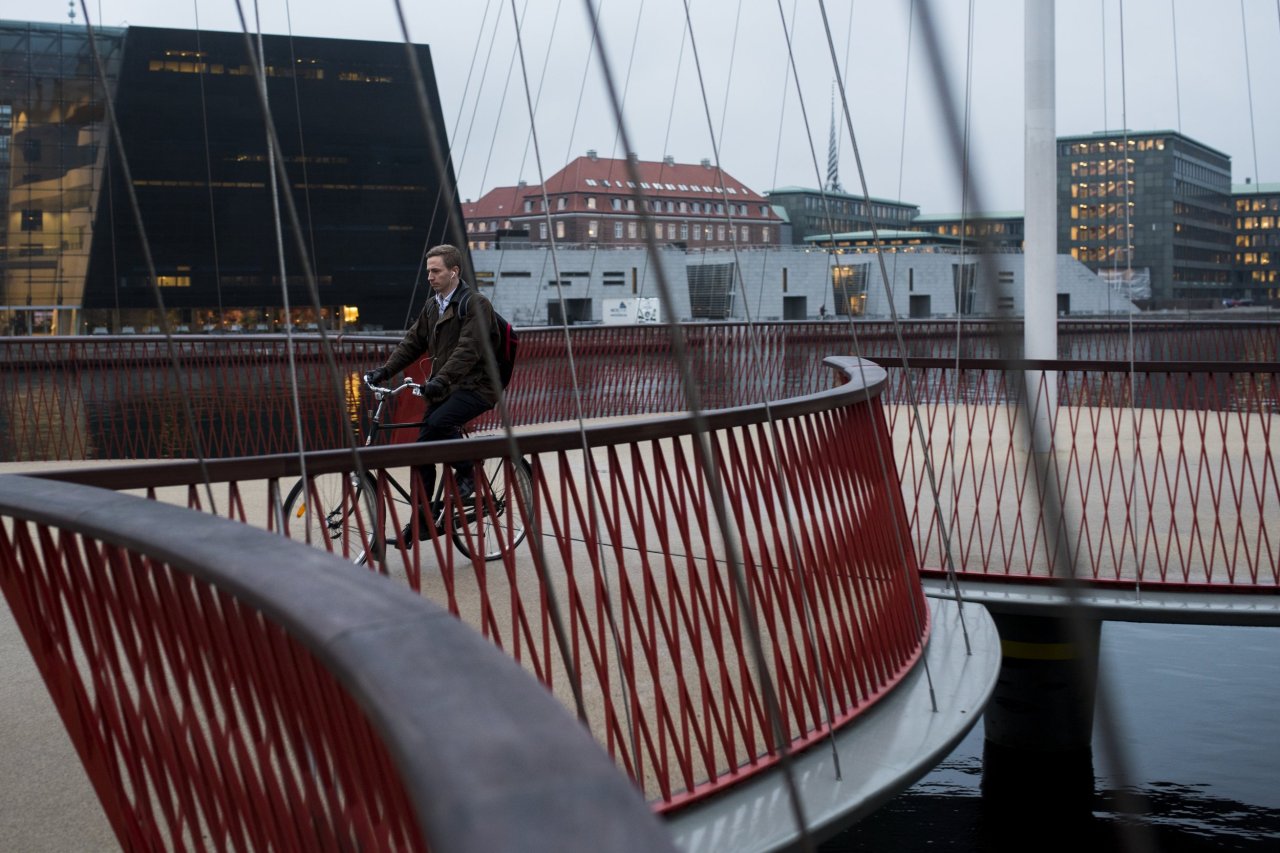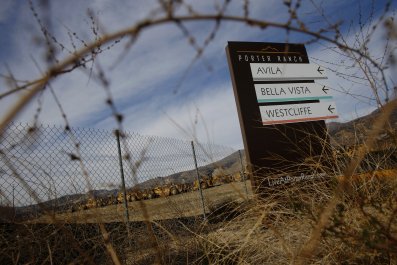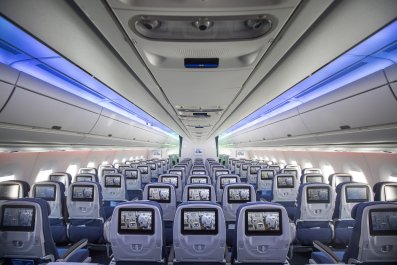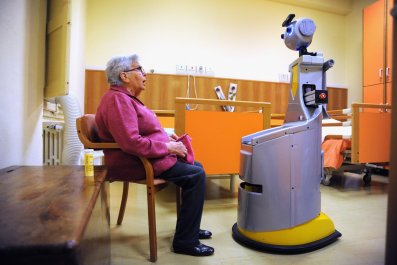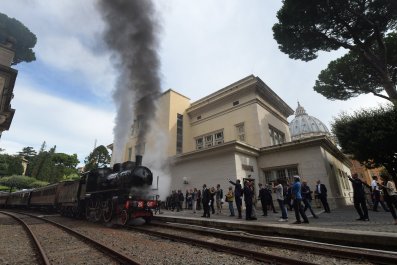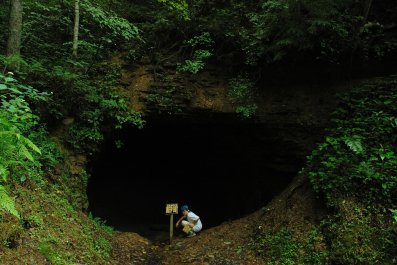It will be the most spectacular bicycle bridge ever built. When completed, it will stretch between two skyscrapers on the Copenhagen waterfront at a height of 213 feet. That's high enough for a cruise ship to pass underneath.
But when the Danish capital announced in early January that after eight years of discussion, construction on the bridge would finally begin this year, it raised concerns among urban planners and ordinary citizens. They worried about who exactly it was for: By choosing looks over access, was a city renowned for its dedication to smart urban design trading function for flash? Or was it, once again, proving it deserves its reputation as the most bike-friendly city in the world?
Copenhagen has perhaps the most advanced cycling infrastructure in the world. Surveys show that 45 percent of the population (including 63 percent of Denmark's parliamentarians) commutes by bike daily, a task made easier by the more than 200 miles of bike lanes. Traffic laws and even signals facilitate biking: Cyclists are allowed to go in the opposite direction on most one-way streets, and many stoplights are timed to turn green for bikes a few seconds earlier than they do for cars. Lights are coordinated so that cyclists who keep to a steady 12 mph don't have to stop on their way into and through the city. More recently, the city began experimenting with embedded LED displays that signal to cyclists when a bus is about to stop near the bike lane so that passengers can disembark.
As that collision-avoidance measure suggests, cycling in Copenhagen isn't only easy—it's also safe. In the U.S., 44 cyclists are killed per billion kilometers traveled by bike nationwide. In Denmark, however, there are only 14.6 deaths per billion kilometers traveled—and this in a country that does not require helmets (only 27 percent of riders wear them). Much of that improved safety has to do with better infrastructure—bike lanes are raised and separated from automobile traffic, for example. But education also plays a role. Children learn to ride in school—biking has been part of the curriculum since 1947—and many get certified as good cyclists by passing a school test that includes an obstacle course. And as the Organisation for Economic Cooperation and Development reports, an increase in the number of cyclists reduces the risk of accidents, partly because drivers are more aware of them. In Copenhagen, most drivers also own bikes, which makes them more sensitive, the thinking goes, to safety on the roads.
Private enterprise contributes to the local cycling culture. There are hundreds of bike shops, many of which rent bikes to tourists. All taxis come equipped with bike racks, for those who decide that a sudden turn in weather or a few too many cocktails might make riding home ill-advised. The cargo, or "Christiania" tricycle, was invented here; a new company, Butchers & Bicycles, has recently patented a more agile kind that allows the three-wheelers to actually tilt, making it easier to take sharp corners. Cycle Savers, a local startup, allows users to send GPS signals to request a mechanic to come fix a flat tire or broken chain.
But perhaps the biggest sign of the city's commitment to cycling is its decision to build eight new bike bridges (also open to pedestrians) across its harbor. The now-controversial Copenhagen Gate project at the Marble Pier, the formal name for the high-rise bridge, is one of them. The elevated bridge will unite two new towers containing apartments and offices while still allowing the many cruise ships that dock in the harbor to pass under it. The construction would ensure that the two buildings complied with a municipal policy that requires all residences to be no more than 0.3 miles from public transportation.
American architect Steven Holl won the bidding process in 2008 with an eye-catching design that would require users—bikes and all—to take an elevator up to the bridge and back down to street level. But the global economic crisis prevented the city from moving forward with the project until recently. And then things got really complicated: In November, the development company behind the high-rises requested a new plan that would restrict the bridge's use to the buildings' occupants. Morten Kabell, Copenhagen's mayor for technical and environmental affairs, opposes the change. "The high bridge with public access is what the locals want," Kabell says. The City Council, however, approved the request, and barring any further changes in design or political temperament, that means most Copenhageners will only be able to look at the bridge, not use it.
Which is why a design already seen by some as precious is coming under further criticism. "It's magpie architecture," says Mikael Colville-Andersen, an urban design expert whose company, Copenhagenize, advises cities on bicycle infrastructure. "You know how magpies are attracted to shiny things? Copenhagen understands the value of big, emblematic architecture. But now everything has changed, and the bridge has become totally nonfunctional."
It's not the first time the city has run into trouble with its bicycle bridges. Although the striking Circle Bridge, designed by Icelandic-Danish artist Olafur Eliasson, opened to much fanfare last summer, the Inner Harbor Bridge—a larger project meant to facilitate cyclist commuting by uniting the busy Nyhavn and Christianshavn areas—has been plagued with problems. It was originally scheduled to open in early 2013, but its first financial backer went bankrupt. Once it was back on track, engineers discovered that the bridge's two sides, which were being built simultaneously from the two shores of the harbor, would not properly meet. Although that problem was eventually resolved and the final connecting piece was installed over the summer, the drawbridge remains unopened while further glitches are ironed out.
Instead of opening its elevated bridge to all cyclists and pedestrians, the company responsible for the Copenhagen Gate has proposed building a second bridge—this one a drawbridge—nearby that would be open to the public. But that one would be of a normal height—hardly as wild a ride.
Which leaves open the question of whether it is worth building the high-rise bridge at all. Although the city has no shortage of gee-whiz architecture—its modern Opera House, Blue Planet Aquarium and Black Diamond library are all stunning—those buildings function for a broad public. And Danes are an unusually pragmatic people. "When you ask people here why they ride bikes," says Colville-Andersen, "they don't say they do it for the exercise or for the environment. They say they do it because it's the fastest way to get from Point A to Point B."



